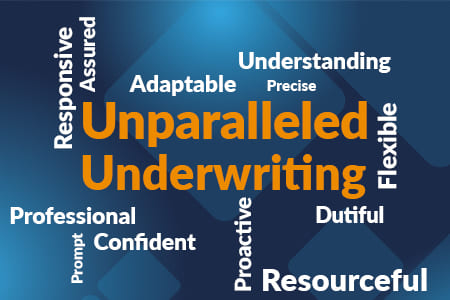You can use our refinancing bridging loans to help where you may need to reorganise your plans, where chains break down, delayed exit strategies emerge, or you need to find better terms.
Latest Case Studies
Addressing How a Shortfall Would Be Covered for a BTL Investment
Read case studyBack Up Exit Strategies and Unearthed Arrears in the Legal Stage
Read case studyCapital Delivered to Cover Existing Facilities and Outstanding Debts
Read case studyEnsuring Our Funding Was Segmented Effectively for a Multifaceted Deal
Read case studyFactoring Potential Future Developments for a Refinancing Strategy
Read case studyFinding a Refinancing Solution for a Borrower with Missed Payments on Their Record
Read case studyFinding a Way Forward For an Investor Facing Conversion Challenges
Read case studyFunding Delivered for Multiple End Goals in the Holiday Let Market
Read case studyHelping a New Broker with a Borrower Facing Potential Shortfall Issues
Read case studyRaising Capital for a Business Which has Fallen on Hard Times
Read case studyRefinancing a commercial asset for an experienced property investor
Read case studyRefinancing to Change the Use of a Property
Read case studyTidying Up Existing Financial Obligations Despite Several Potential Alerts
Read case study
Re-bridging loans in any circumstances
- Min. loan amount: £100k
- Max. loan amount: £50m
- Max. LTV: 75%
- Interest rates: variable rate from 0.35% (+BBR), fixed rate from 0.70%
- Charge type (1st/2nd): 1st and 2nd charge
- Term: 3 – 18 months
- Exit fee: POA
- Location of property: England, Wales
Refinancing Bridging Loans –
What you need to know:
What type of loan is this?
Refinance loans allows you to replace existing finance secured against a property. This may be needed where your current finance has run out before you completed your plans, an exit strategy has fallen through, and more time is needed to formulate a new plan.
How much can I borrow?
You can borrow between £100,000 and £50,000,000, depending on your circumstances and the type of assets you’re investing in.
What can I use refinancing bridging loans for?
You can use your refinance loan for multiple investments. On top of providing breathing space to secure long-term financial solutions, you could utilise the funding to finalise a refurbishment project or find new buyers.
You may also seek out a refinancing deal if it results in a cheaper rate or more favourable terms. It’s also possible to refinance more than once. You may need to raise additional funds for expanded business plans and other projects.
What types of property can I purchase?
Refinancing bridging loans can be used for a range of property types, so long as they’re situated in England or Wales. This includes residential assets like HMOs, or commercial properties such as warehouses or shopping centres.
They can also be used for semi-commercial properties, where residential and commercial spaces are found in the same building. Flats situated above retail being a common example.
Benefits of re-bridging loans
You may be thinking about your refinancing options given what we’ve seen in the market. Mainstream lenders have been spooked by rising inflation and general uncertainty. As a result, they have pulled deals rapidly and tightened their criteria’s.
Interest rates are also still expected to rise, and the cost-of-living crisis shows few signs of slowing down. As high street banks struggle to adapt, you may be looking to refinance, and if you need a specialist lender, it should be one that tackles uncertainty head on.
Refinancing bridging loans can provide you with peace of mind during difficult periods. Where you’re stuck with poor terms, or your chain falls through, you won’t be forced to see your plans come to a complete stop.
With access to our flexible and speedy finance, you’ll be provided with time to make new plans. Our funding will allow you to keep your property investment plans afloat while you strategise for the future.
Things to consider before getting re-bridging loans
When it comes to re-bridging or refinancing your existing bridging loan, there is one key factor to consider: your exit strategy. We would want to know how you intend to exit your loan when it comes to re-financing. Having an exit strtegy in place will help your chances to get your loan approved as well as moving things along quickly.
Who is eligible?
All our loans are bespoke and open to a broad range of property investors. But, at a minimum, you’ll need to be aged between 21 and 85 to be eligible. You must also be investing in England or Wales.
Beyond that, you can put through an application with multiple parameters. You can apply as an individual or via a business structure – including limited companies, LLPs, SPVs or even offshore entities.
We’re able to serve property investors from any country, excluding those that are blacklisted. We can work with you even if you don’t live in the UK or own any assets here.
How long does it take to arrange refinance loans?
We can have funding issued in as little as 3 days. On average, we find most of our cases are wrapped up within 2 weeks. How quickly your cases progresses will depend on numerous factors, including any third parties involved. Generally, the more clarity we have on your situation, the quicker we’ll be able to progress your deal.
Additional fees
There are no admin fees for any of our bridging products. What’s more, commitment fees are refunded on drawdown. For refinancing bridging loans, there may be exit fees. The amounts charged will depend on the type of asset you’re investing in. Your assigned underwriter will keep you up to speed on any fees you may incur.
Difference between refinance and other loans
The main difference between our re-bridging loans and other products concerns where you are in your property investment journey. Our other loans may be used to make an initial purchase. Whereas refinance loans will typically be used for an ongoing project or current asset.
What information do you need to process a re-bridging loan?
We’ll require your basic details. This includes information on your background and finances. However, as all our deals are assessed on their individual merits, additional needed details will vary between our clients. Where more information is required, our underwriters will keep you up to speed. You’ll never be unsure of the next steps.
How can I apply?
To get the ball rolling on your refinancing plans, you’ll need to contact us. We can be reached over the phone, through email, or via live chat. We respond to all enquiries within 4 hours, and you can also request a call back.

























